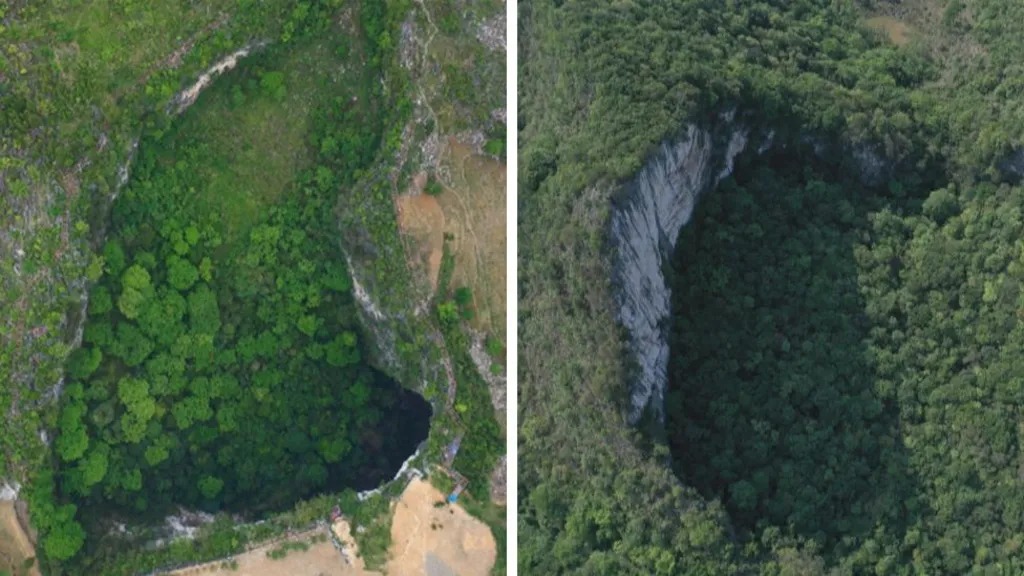
The Allure of China’s Sinkholes
China’s Sinkholes Tourism Impact has become a hot topic, with their stunning natural beauty drawing tourists worldwide. However, these geological wonders, which preserve ancient forests and unique ecosystems, face threats from increased human activity and development pressures.
The Allure of China’s Sinkholes
Located primarily in the Guangxi province, China’s sinkholes are home to a wealth of biodiversity, including rare plants and animals. This “lost world” with towering trees and endemic species offers a glimpse into ancient times, making it a magnet for explorers and scientists alike. Brother Fei, an experienced guide, witnessed the transformation of these sinkholes from local obscurities to global attractions.
As tourists like Rui and Michael descend into the depths of these natural wonders, local economies benefit. Guangxi’s challenging geography, with limited farmland and difficult trade routes, now finds a new lifeline through ecotourism. The region’s economic uplift is a double-edged sword; while the development brought infrastructure improvements, it raises environmental concerns. Learn more about sustainable tourism efforts Insights on Nature Conservation.
Balancing Tourism and Conservation
With more than 300 sinkholes, two-thirds located in China, balancing tourism with conservation becomes crucial. Dr. Lina Shen, a leading researcher, emphasizes the importance of protecting these habitats. The potential for irreversible ecological damage due to overdevelopment underscores the need for sustainable tourist practices, such as limiting access and utilizing technology like drones for remote viewing.
Efforts to protect sinkholes include closing some of them to tourists, safeguarding species such as unique orchids. Proposed solutions, like hot air balloon viewing and remote observation paths, aim to minimize human impact while allowing appreciation from a safe distance. Explore more on key environmental stories Explore Environmental News.
Brother Fei, now a prominent guide, advocates for clear regulations to balance enjoyment with preservation. His deep connection with the sinkholes reflects a broader understanding that while tourism fuels the local economy, maintaining these natural treasures in their pristine state is vital.
In conclusion, China’s sinkholes are not just a geological marvel but a testament to the delicate balance between economic interests and ecological conservation. As tourism in these regions grows, ongoing efforts will be crucial to ensuring these ancient ecosystems are protected for future generations.





